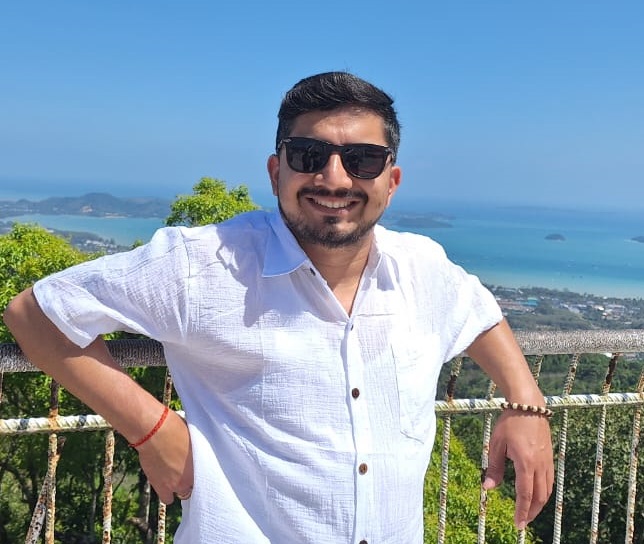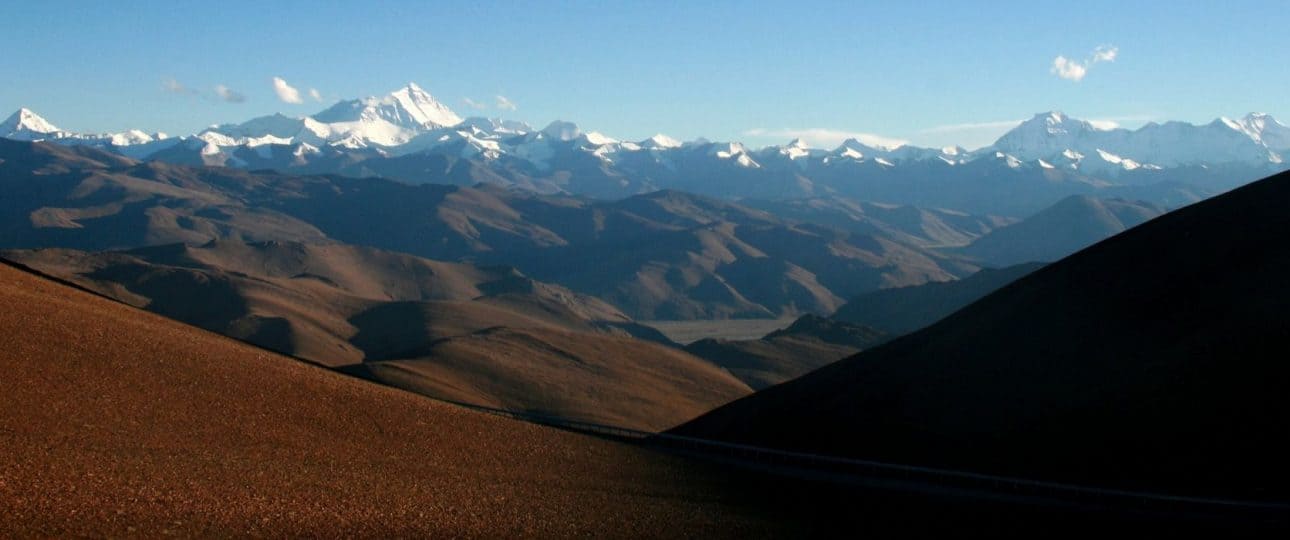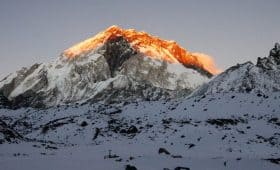Everest Base Camp trek is one of the most adventurous and lengthy treks in Nepal. And, is a high altitude trek in Nepal.
So, travel insurance is considered as mandatory for such a trek that involves various risk factors including altitude sickness.
As the trekking routes get more remote, the risk factors increase while chances of getting medical attention get scarce.
If you are at higher altitude and you happen to suffer from any medical illness, rescue via land can be quite impossible. You might not get immediate medical care.
In such cases, you will need a helicopter evacuation. It’s far faster and better than a painful ride down on a mule or in other cases, a Sherpa or a porter carrying you down.
There are a lot of things that might and can go wrong at such a high altitude. These risks factors can include a simple leg injury like sprained ankles or knees; life-threatening high altitude sickness like AMS (Acute Motion Sickness), HAPE (High Altitude Pulmonary Edema) or HACE (High Altitude Cerebral Edema); or natural disasters like earthquakes, avalanches, and rock-falls.
Thus, all these risk factors make it more than important to have the right Travel Insurance for Everest Base Camp.
Table of Contents
Why Do You Need Travel Insurance for Everest Base Camp Trek?
Some medical emergencies that might occur when you go trekking would include common injuries like sprained ankles or broken bones.
The most fearful and worrisome medical emergencies are altitude sickness, food poisoning, hypothermia, appendix ruptures, skin infections, and respiratory infections.
But, these medical conditions can not be easily cured if you are at around 5364 meter/ 17600 feet above sea level. At this height, you can not be carried to a nearby hospital on foot, on a mule’s back; therefore helicopter is definitely needed.
Another scenario may include suffering from bad weather, crossing difficult terrain and even encountering wild animals.
Most of the altitude sickness occurs in higher altitude at night. So, if you cannot cope with the altitude it is advisable that you return back ASAP.
In such cases, help will be available at lower altitude it won’t be a problem unless you try to push yourself.
If you are trekking over 4000 meters, most of the insurance policies will not cover it. It might be a big problem, so choosing the right insurance company is a must.
Thus, we still stress that “Everest Base Camp lies at an altitude of 5300+ meters and most travel insurance companies will not cover you for trekking at that altitude.”
So, be sure to choose wisely when booking a Travel Insurance for Everest Base Camp Trek.
People suffering from high blood pressure or a heart condition are advised not to take part in EBC trekking. The high-level altitude and less oxygen put you at a risk of having stress on your heart, thus increasing your blood pressure.
The most common injuries and health issues while trekking to the Everest Base Camp include:
- Nausea
- Vomiting
- Dizziness
- Giddiness
- Exhaustion
- Shortness of breath
- Hypothermia
- Headaches
- Frostbite
- Sunburn
- Elevated heartbeat
- Lack of coordination
- Lethargy
- Loss of appetite
- Swelling of hands and feet
- Excessive flatulence
- Insomnia
- Sprained ankles
- Sprained knees
- Irrational behavior and depression
- Lack of performance (no walking coordination)
- Breathlessness
- Heart palpitations
- Coughing with frothy or bloody sputum
- AMS (Acute Motion Sickness)
- HAPE (High Altitude Pulmonary Edema)
- HACE (High Altitude Cerebral Edema)

What To Expect From a Travel Insurance Company
Here are the five main categories of travel insurance that you need to know before choosing an insurance company:
Trip Cancellation Insurance
Trip cancellation insurance is simply a trip interruption insurance or trip delay insurance. It covers you in the case when you or your traveling companions need to cancel, interrupt or delay your trip.
Different insurance companies have different terms and conditions. But, most of them do cover cancellation or interruption for the following reasons:
- Sudden business conflicts
- A sudden change of mind
- Delay in processing your visa or passport
- Illness or injury
- Weather-related issues
- An act of terrorism
- The vendor (mostly airline) going out of business
- An emergency or an accident on the way to the airport
- Fire or flood in your area
- Jury duty
The insurance usually pays the difference between the refund you get from the vendor and the amount you originally paid for the trip.
Travel Medical and Major Medical Insurance
These types of insurance provide medical insurance if you become ill or injured while trekking. The difference between these two types of insurance is the duration of coverage.
Travel medical insurance provides only short-term medical coverage. While major medical insurance is for travelers who are planning to take longer trips of six months to one year or longer.
This type of insurance will help you cover medical expenses. It also helps locate doctors, hospitals, healthcare facilities, and foreign-language services if you become ill or injured while trekking.
Emergency Medical Evacuation Insurance
This is one of the most important and main insurance. This insurance provides coverage for medically necessary evacuation and transportation to medical facilities.
These costs can easily reach $10,000 to sometimes $100,000 if you don’t have insurance coverage.
This is one of the most important insurance if you are stranded in a remote rural area while trekking and access to medical facilities aren’t easy. You will then have to be evacuated by a helicopter.
Be on the lookout for an insurance company which offers its services at around 6,000 meters above sea level as EBC covers grounds at around 5500+ meters.
Accidental Death and Flight Accident Insurance
Accidental death and flight accident insurance actually pays benefits to a trekker’s surviving beneficiaries. It is same as a life insurance policy. Benefits are paid out in case of an accident resulting in the death or serious injury to the trekker.
Avoid True Traveller Insurance:
When you buy travel insurance, it’s better to avoid getting it from True Traveller. They might not be very helpful in an emergency situation, and they will charge you an extra fee of GBP 750 if you need to be evacuated.
Instead, it’s better to choose an insurance provider that is more trustworthy and won’t charge you extra for emergency evacuations while trekking in Nepal. Go for WorldNomads, we do not recommend True Traveller insurance.
Why World Nomads?
Mosaic Adventure always recommends World Nomads to start your adventure in the Himalayas!
Here’s why we recommend World Nomads for our Everest Base Camp trek insurance:
- Most of the World Nomads plans can cover hiking/trekking up to 6,000 meters on recognized routes. So, you need to make sure to choose the correct plan for hiking/trekking cover. Most insurance companies cover up to around 4,000 to 5,000 meters only which isn’t good enough for Everest Base Camp trekking as you will be above 5,000 meters.
- World Nomads covers you for activities arranged in-country. Many travel insurance companies’ terms & conditions require that you trek with a Western operator. It is so that, rather than paying out, they can claim from the operators’ insurance.
- They will cover you for helicopter evacuation, provided you contact them before you book the helicopter and their 24-hour assistance providers agree that it is medically necessary.
- You can book your insurance coverage even if you have left your home country. Another thing is, no matter how long you have been traveling, you will get insured. Read their Terms & Conditions for more.
- Nationals of most countries can buy a policy that covers against natural disasters, such as earthquakes, avalanches, rock-falls, and other natural calamities.
- World Nomads is backed by reputable insurers and 24-hour assistance providers – the point is to ensure that you’re covered in the event of a disaster.
Note
All travel insurance plans are different. The cover will vary, depending on the incident, your country of residence, the plan you choose and any options or upgrades you buy. So be sure to look out for Terms and Conditions and get full information correctly before purchasing the insurance.
Additional Note
Everest Base is at an altitude of 5300+ meters above sea level. Rest assured, you will have the best possible insurance for your trek. Just make sure it includes Helicopter/Air Ambulance rescue charges if necessary on medical grounds.
When you arrive in Nepal, register your insurance with our Trekking Company. Give us a copy of the Insurance Certificate and point out the Emergency Telephone numbers.
This helps our guides to contact for authorization for an evacuation directly. It is because the Himalayan Rescue Associations will not dispatch a helicopter unless they are 100% sure that they will receive payment for the rescue.
The main thing to do is not lie. If you become ill while trekking and if you are not sure if it is altitude sickness, go directly to the team leader or your guide and notify them. Do not go higher as the symptoms may get worse if you ascend in such condition.
Even the travel insurance will not help as it might get worse with time and it takes a while to get help at that altitude and weather.
We hope you have a wonderful time at the Everest Base Camp trek. Please do not hesitate to contact us with any questions related to Travel Insurance for Everest Base Camp or any other inquiries.

Madhav started working as a porter in 2001 and then moved on to work as a trekking guide. After working in the trekking and tourism industry for eight years, he co-founded Mosaic Adventure in 2009.
Madhav has trekked to most of the trekking destinations in Nepal, including Everest Base Camp Trek, Annapurna Base Camp, Annapurna Circuit Trek, Poon Hill Trek, Jomsom Muktinath Trek, Indigenous Peoples Trek, Langtang Valley Trek, Mardi Himal Trek, and all of the day hikes around Kathmandu.
He has also extensively traveled to other countries such as Australia, the USA, the UK, France, Hong Kong, Japan, China, the Philippines, the UAE, Saudi Arabia, Bahrain, Thailand, Turkey, and India. Madhav is the one who answers most of your questions about trekking and tours and helps to plan your trip by giving a personal touch.




